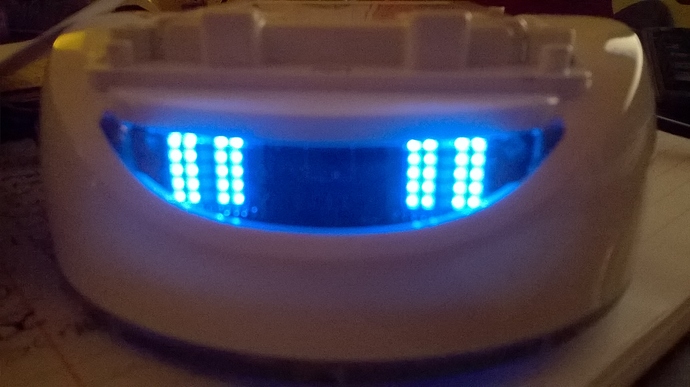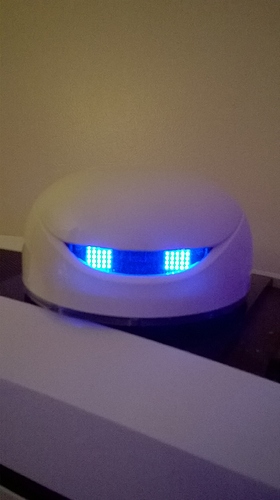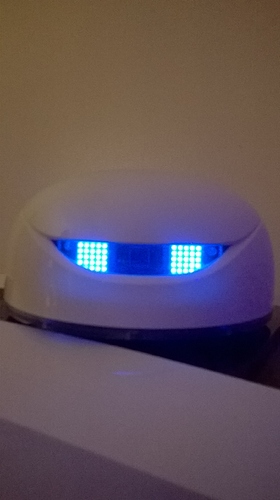#define MP3_VOLUME 0x10
#define TX 11
#define RX 4 // ?? was 2 in example I found, but that is unlikely
#include <SoftwareSerial.h>
#include <Wire.h>
#define I2C_LED_ADDRESS 0b1100000
#define I2C_WRITE 0x00
SoftwareSerial mySerial(RX, TX);// RX, TX
void setup() {
// put your setup code here, to run once:
Wire.begin(); // join i2c bus (address optional for master)
delay(10);
mp3Init();
mp3setVolume(10);//0~30
delay(10);
custom_eyes(1,1);
}
void loop() {
for(int i=0;i<15;i++) {
mp3setVolume(10);//0~30
custom_eyes(1,1);
mp3player(i);
delay(30000); //.5 minute
mp3stop();
delay(250);
mp3setVolume(10);//0~30
}
}
void mp3Init()
{
mySerial.begin (9600);
}
void mp3setVolume(byte vol)
{
uint8_t buffer[] = {0x7e, 0xff, 0x06, 0x06, 0x00, 0x00, vol, 0xef};
mySerial.write(buffer, 8);
delay(20);
}
void mp3player(byte data)
{
uint8_t buffer[] = {0x7e, 0xff, 0x06, 0x03, 0x00, 0x00, data, 0xef};
mySerial.write(buffer, 8);
delay(20);
}
void mp3stop()
{
uint8_t buffer[] = {0x7e, 0xff, 0x06, 0x16, 0x00, 0x00, 0x00, 0xef};
mySerial.write(buffer, 8);
}
void custom_eyes(uint8_t color, uint8_t eyeline[10]){
uint8_t index;
// right eye left eye
//1 2 3 4 5 - 25 24 23 22 21
//6 7 8 9 10 - 20 19 18 17 16
//11 12 13 14 15 - 15 14 13 12 11
//16 17 18 19 20 - 10 9 8 7 6
//21 22 23 24 25 - 5 4 3 2 1
Wire.beginTransmission(I2C_LED_ADDRESS << 1 | I2C_WRITE); // transmit to device #4
Wire.write(0x55); // color 55=custom eyes follow
Wire.write(0xAA); // ?? AA=color followed by 10 bytes, each defining one line
// other values cause eyes to light up in multiple colors, needs more work
Wire.write(color&0x1); //color 1-B,2-G,4-R of foreground
Wire.write(eyeline[40]);
Wire.write(eyeline[40]);
Wire.write(eyeline[40]);
Wire.write(eyeline[40]);
Wire.write(eyeline[40]);
Wire.write(eyeline[40]);
Wire.write(eyeline[40]);
Wire.write(eyeline[40]);
Wire.write(eyeline[40]);
Wire.write(eyeline[40]);
Wire.endTransmission(); // stop transmitting
}
I think I fixed most of it…






